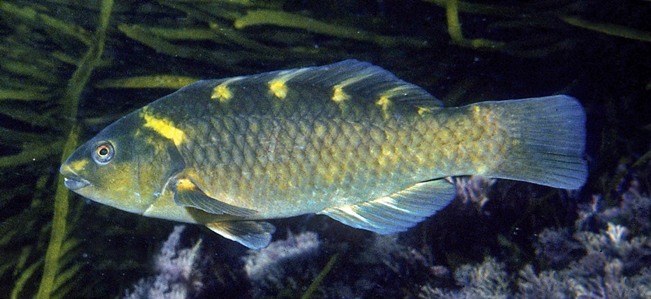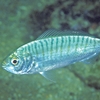General Description
Moderately deep-bodied wrasses. Adults overall greenish-blue to brown, with a purple tinge, and five indistinct yellowish bars on body and fins. Juveniles reddish-brown with green and orange mottling. To 45 cm.
Biology
These fishes are carnivores with strong canines and crushing teeth for feeding on benthic invertebrates such as crabs, bivalve and gastropod molluscs and echinoderms. Juveniles prey on tiny amphipod and isopod crustaceans.
Habitat
Kelp beds on exposed and moderately rocky reefs, in depths of 1-90 m.
Reefs
Distribution guide
New Zealand and south-eastern Australia.
Species Group
Fishes › Wrasses, rock whitings and allies
Depth
Shallow (1-30 m)
Deep ( > 30 m)
Water Column
Max Size
45 cm
Commercial Species
No
Global Dispersal
Recorded in Australia
Identify
Conservation Status
- DSE Advisory List : Not listed
- EPBC Act 1999 : Not listed
- IUCN Red List : Least Concern





